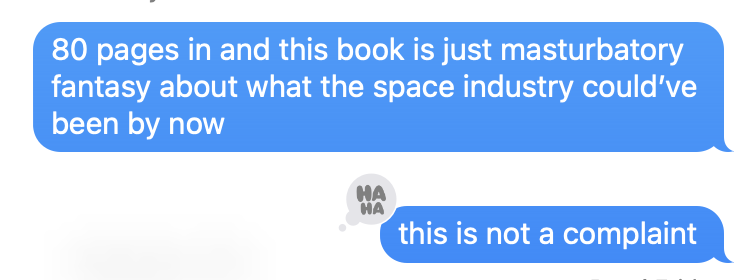Earl Swift
I have, of late, fallen down something of an urbanism and transit policy rabbit hole. Although, I suppose calling it “of late” isn’t all that accurate, it’s apparently been the last couple years. Regardless, I have a certain set of existing thoughts about the interstate highway system, and thus came into this book with a certain amount of skepticism. It felt poised to be a glorification of the “open road,” a paean to the greatest infrastructure project ever undertaken.
And, for a while, it was, but just as the public feeling on highway construction changed at a certain point, so too did the book’s. We were no longer following the early motorists and their obsession, and instead delving into the fight against the freeways. Suddenly, we were seeing some of the same arguments that urbanists are still making today:
In retrospect, the survey’s were self-fulfilling—their yardsticks were motorist safety, travel time, gasoline use, and incidence of repair, all facets of the driving experience. The effects on those not using the roads were neither as easily tallied nor as eagerly sought.
The final part of the book felt very “bittersweet Americana” to me; we saw the retirements, fading into obscurity, and obituaries of the men who built the interstate highways. And at the same time, we saw the dream fading into the reality we got, culminating in this description that felt truly, deeply tired:
Interchanges have more in common with each other than any one of them has with wherever it happens to be. The twain have met; exit a California interstate, and you’ll find what you left in Connecticut—and very little that you didn’t leave in Connecticut. The interstates take a distillation of the broad American culture—a one-size-fits-all, lowest-common-denominator reading of who we are and what we want—wherever they go.
All in all, I found this a fascinating history. How many people know that the interstate highway system is properly titled “The Dwight D. Eisenhower National System of Interstate and Defense Highways”—much less that he really had no idea what he was signing, and his design for the highway system had approximately nothing to do with what was in the bill, much less what was built? I knew the first part, but thought he’d actually been, at least in part, the architect of the thing. I bought the story that the system was created based on his experience of the Autobahn during the war, and of a horrible cross-country “road” trip prior to it, not that it was an existing plan written up a decade before by engineers. Seriously, there’s plenty of new information in here—and quite a few wild characters, because it starts back before the automobile was even around, and boy howdy were some of those early motorists bonkers. I would up enjoying the heck out of this book, and highly recommend it; check it out.
- And yes, they were all men; the only women really making an appearance anywhere in this book were the wives. I thought the “secretary treated as right-hand woman” of The Chief was going to be an exception, but at some point they began an affair, and he apparently celebrated the loss of his job by asking her to marry him. ↩
- This is an Amazon affiliate link – if you buy it from here, I get a little bit of commission. It won’t hurt my feelings if you buy it elsewhere; honestly, I’d rather you check it out from your local library, or go to a local book store. I prefer Bookshop affiliate links to Amazon when possible, but in this case, the book wasn’t available there, so it’ll have to do. ↩
